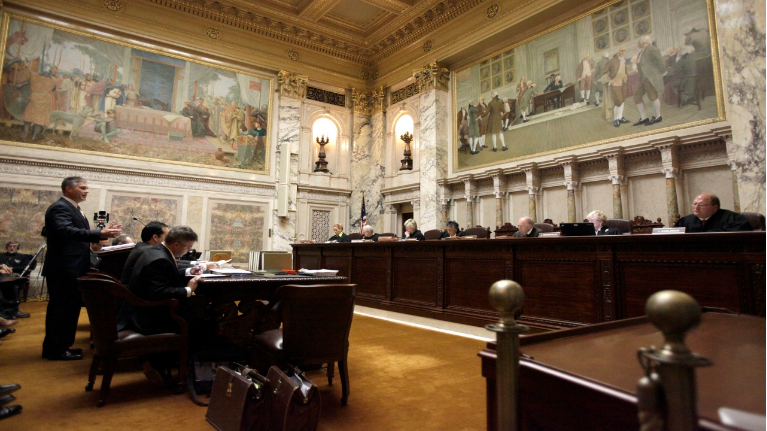MADISON, Wis. (AP) — A divided Wisconsin Supreme Court on Thursday adopted “least change” legislative and congressional redistricting maps submitted by Democratic Gov. Tony Evers, a plan that keeps Republican majorities in place by making few deviations to current districts.
The conservative-controlled court had previously said it would not make significant changes to the boundary lines that were already in place and created by Republicans in 2011. The Evers proposal it adopted keeps the Republican majorities, but it was slightly less favorable than the plans submitted by the GOP legislative majorities.
Justice Brian Hagedorn, who is often a swing vote on the court, wrote the 4-3 majority opinion. He was joined by the court’s three liberal justices, while the three conservatives dissented.
“We said we would choose maps that minimize changes from current law and evaluate maps for compliance with state and federal law,” Hagedorn wrote for the majority. “In so concluding, we rejected an approach that involved this court making significant policy decisions or weighing competing policy criteria.”
The map submitted by Evers complies most closely with the criteria set out by the Supreme Court and complies with the federal Voting Rights Act, attorneys for the governor argued before the court in January.
The Legislature’s attorney countered that the governor’s legislative map was unconstitutional because it moved too many people to create more districts with a majority of Black and Hispanic voters.
All of the submitted maps had to adhere closely to the current boundary lines, per the court’s earlier order. The court previously ruled that changes to the current maps would have to be limited to population shifts made apparent by the once-a-decade census.
Redistricting is the process of redrawing the state’s political boundaries based on the latest census showing how populations have changed in neighborhoods, cities and counties since 2010. Mapmakers can create an advantage for their political party in future elections by packing opponents’ voters into a few districts or spreading them thin among multiple districts — a process known as gerrymandering.
In 2018, Democrats won every statewide race but Republicans held more than 60% of legislative seats. Republicans blamed bad Democratic candidates, in part, while Democrats argued that gerrymandering enshrined the GOP advantage.
Republicans have a 61-38 majority in the Assembly and 21-12 majority in the Senate. They also hold five of eight congressional seats.
Republicans controlled the Legislature and governor’s office in 2011, the last time redistricting was done. Evers vetoed the Republican maps last year, putting the battle in court. Evers called the maps “gerrymandering 2.0.”
Democrats have also filed a federal lawsuit.



